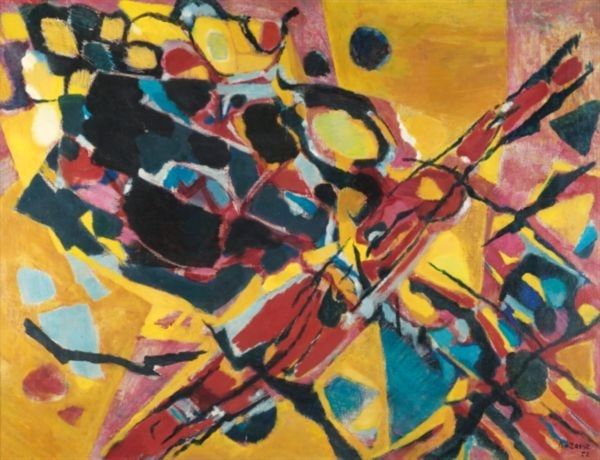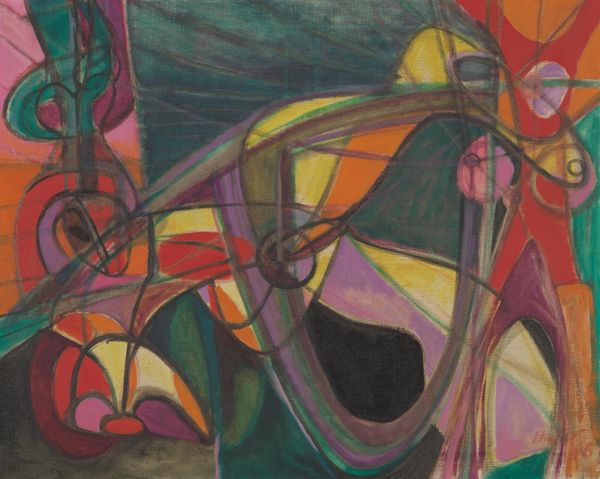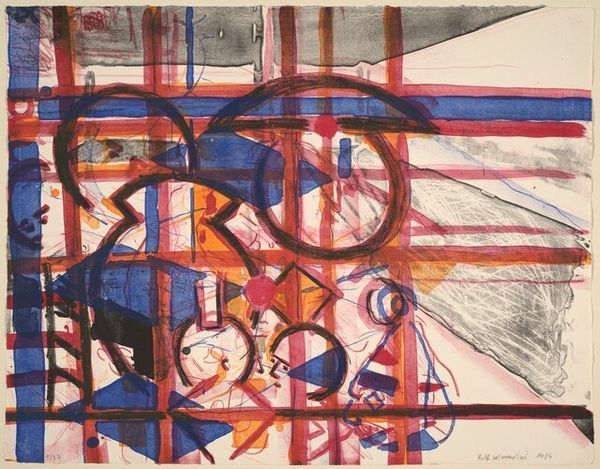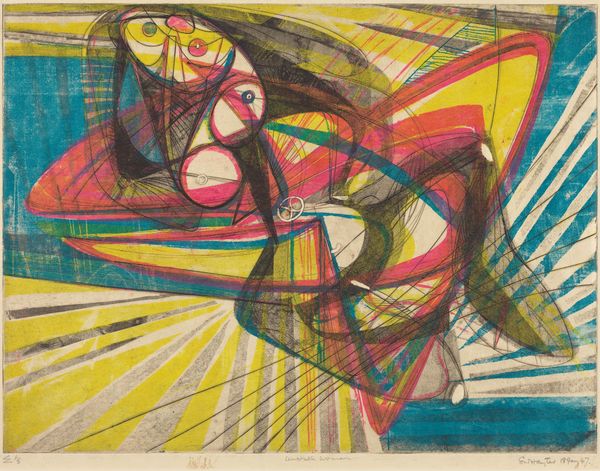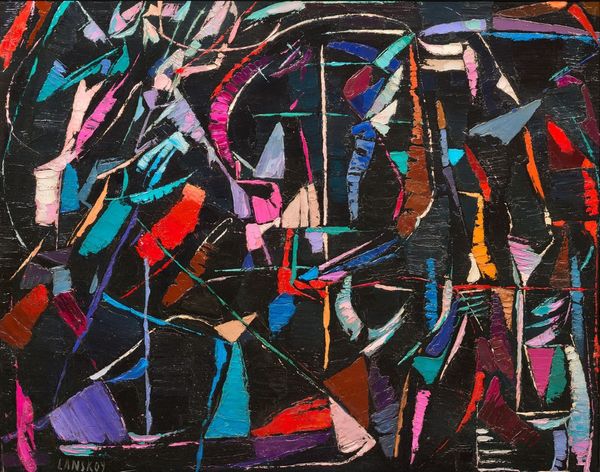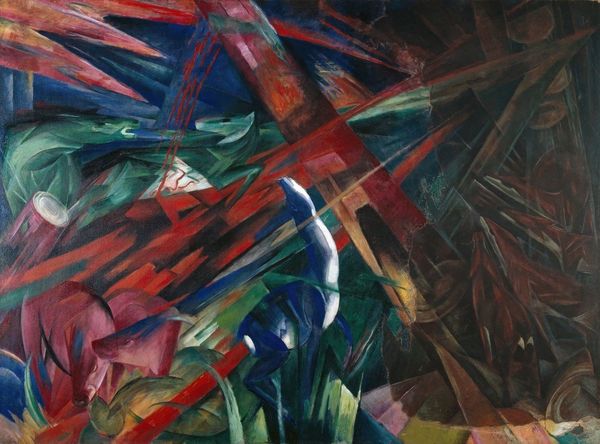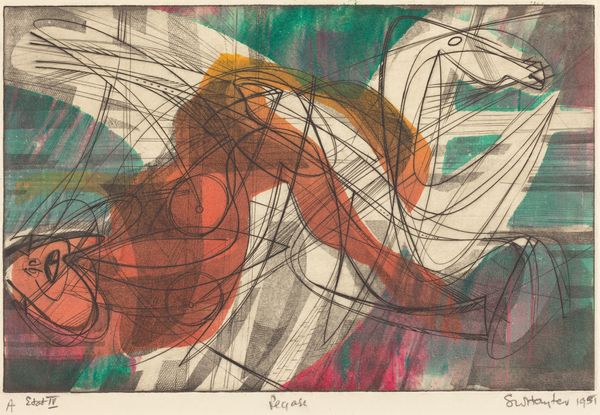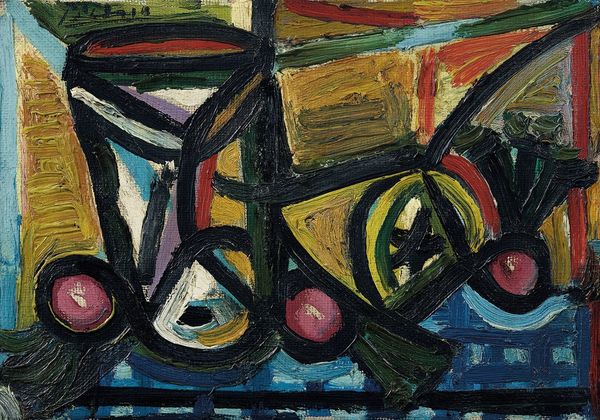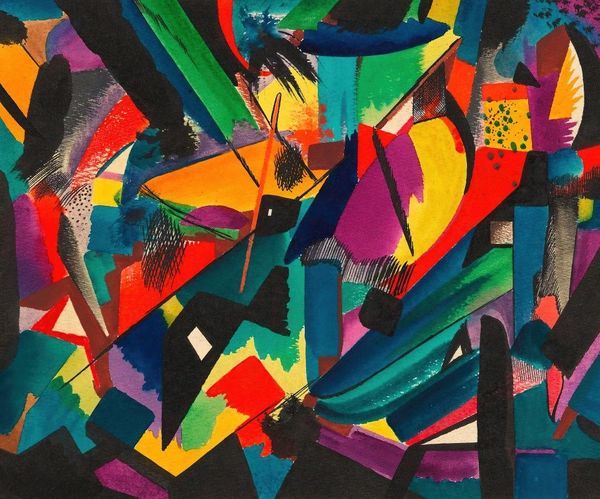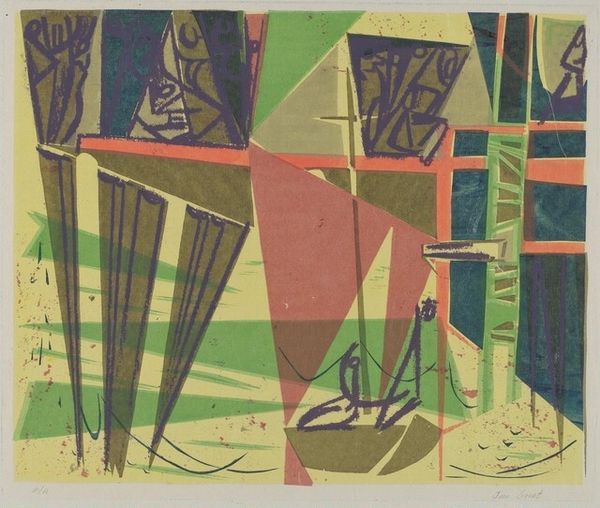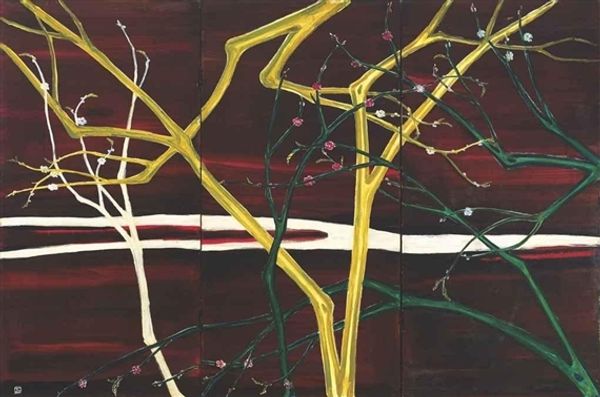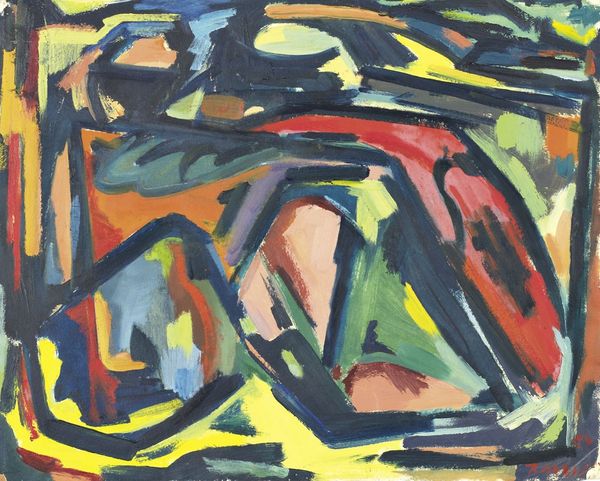
Dimensions: support: 546 x 1480 mm
Copyright: © Tate | CC-BY-NC-ND 4.0 DEED, Photo: Tate
Editor: This is Stanley William Hayter's "Fish in the Escoutay" from the Tate Collection. I’m struck by the way the colours swirl and blend; it's almost dizzying! What do you see in the composition of this piece? Curator: The dynamic interplay of line and color is key. Notice how Hayter uses curvilinear forms to create a sense of movement, mirroring the fluidity of water. The fish themselves are deconstructed, reduced to essential lines and shapes, aren't they? Editor: Yes, I see that now! It’s less about realistic depiction and more about capturing the essence of the fish and their environment through abstract forms. Curator: Precisely. It's an exploration of form and space, relying on our perception to complete the image. Did you find this enlightening? Editor: Absolutely! I understand better how abstract art can still represent reality through shape and colour.
Comments
tate 8 months ago
⋮
http://www.tate.org.uk/art/artworks/hayter-fish-in-the-escoutay-n06069
Join the conversation
Join millions of artists and users on Artera today and experience the ultimate creative platform.
tate 8 months ago
⋮
An impression of darting, fluid movement is suggested by this work. Hayter was influenced by Surrealism and the idea of allowing images to rise from the unconscious part of the mind. He was also an experienced sailor, and this painting reflects his fascination with movement in water. 'The trajectory of movement is more clearly defined in water' he said; 'I can follow the laws of space better in the substance of water which is dense and at the same time fluid.' Gallery label, August 2004
